December 6 - 12, 2015: Issue 243
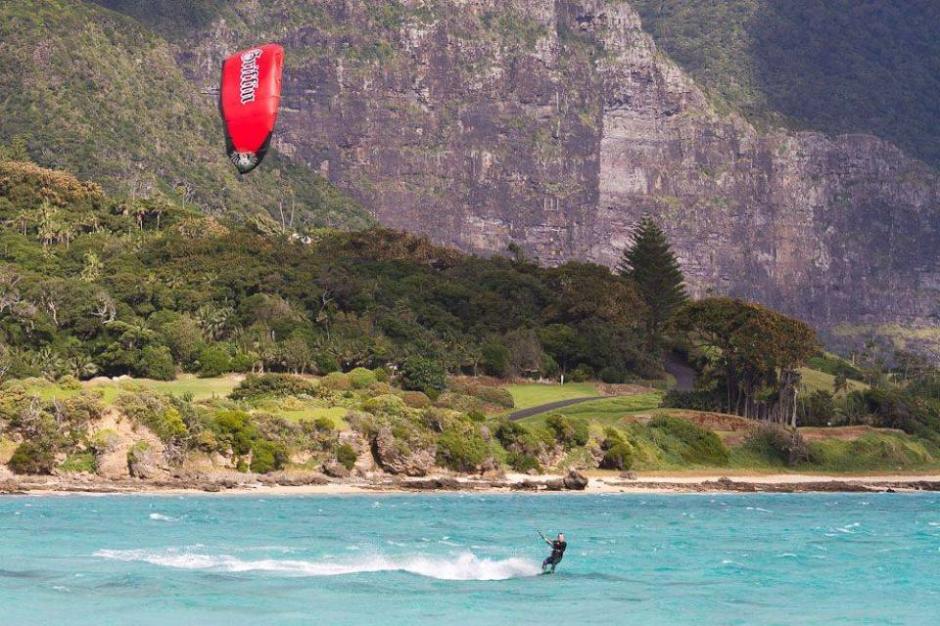
Brett Crowther kite surfing at Hawkes Nest - picture courtesy Jack Shick Photography
Brett Crowther
Brett Crowther is an Australian and local success story, a self effacing six and a half foot giant, this gentleman has 'just get on with it' in spades and proves you can begin in one field and adapt brilliantly to another. He's a giant in attitude too, although he wouldn't credit it, states he can be 'lazy', when laid-back may be closer to the point, and taking on and making a success of Incat-Crowther, worldwide, is 'doing your job' and 'working, putting food on the table', even though these designs and advances are benefitting companies and on water transport everywhere you look both within Australia and in the States, Africa, Chile, Singapore - anywhere something superlative is required.
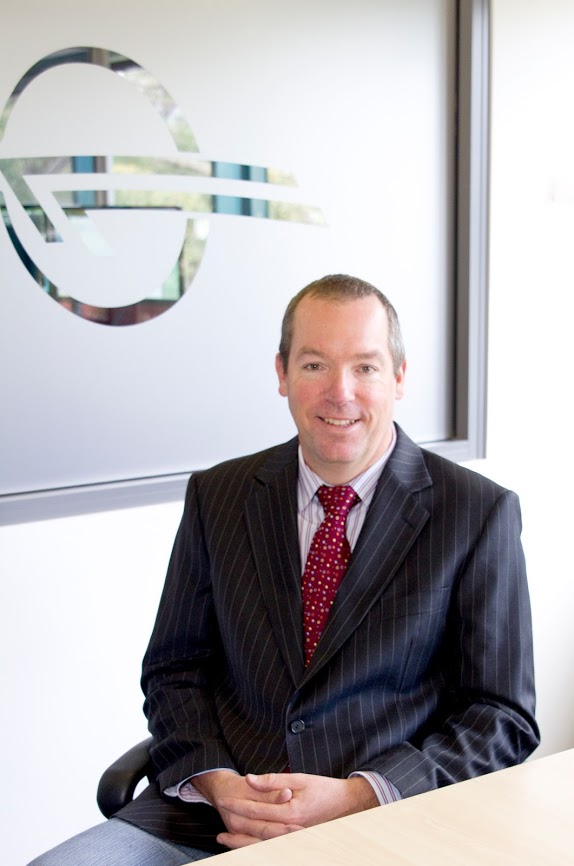 He's one of our own, the son of legendary International Sailor and Boat Designer Lock Crowther, who has a lot of his dad's ethos and attitude, 'can do', has been carried through and is being taken forward.
He's one of our own, the son of legendary International Sailor and Boat Designer Lock Crowther, who has a lot of his dad's ethos and attitude, 'can do', has been carried through and is being taken forward.
To open a Summer 2015-2016 run of local and Australian legends, we're beyond stoked to share a small insight into one Brett Crowther:
When and where were you born?
Mona Vale Hospital in 1968.
Where did you grow up?
In Frenchs Forest. Back in those days it was mostly bush, before all the housing estates, and our home backed onto the bush – I had to pick the red-bellied black snakes out of the garden and the funnel webs out of the pond.
Did you come down to Pittwater much?
A little bit. My family used to for sailing as my father sailed Tornadoes on Pittwater all the time. I have lots of childhood memories of hanging out on the beach or wetting a line. He was a member of the Pittwater Sailing Club, as it was known then, sailing out of Sand Point at Palm Beach.
Where did you go to school?
Forest High, which was a good school, gave a good education. I then went to Sydney University to do Chemical Engineering.
Chemical Engineering?! How did you end up a Boat Designer?
When I finished Engineering and found it was difficult to get a job. I looked for around a year and while doing so I worked for my father, who was a Boat Designer at that time, and after a year I stopped looking hard for work in the Chemical Engineering field.
So you enjoyed being around the boats?
Yes. He was designing large catamarans and was very well known for this, for offshore sailing and racing catamarans. In those days people would buy a set of plans off him and build them in their backyard.
What did you learn from him about building boats?
Well, where do you start when you think about what you pick up from your father?
As I child I was good at mixing glue to support my father’s boat building.
I would have been 21 when I finished Uni and having an Engineering education I was initially helping him out with the engineering calculations, the structural calculations and making sure the boats don’t break.
How did you get into Designing boats?
I was working for Lock and was there for around 18 months, a few years, when he passed away suddenly. He had four staff, of which I was one, and something like that happening is very traumatic. We had some projects underway where I was dealing with the customer. I remember one in particular rang up and said ‘I’ll give you a week, but I need you to finish my project and I’ll pay you – I’m halfway through it and I’ll be stuck without you.’
So I just kept going – the other staff that were there decided to hang around for a little while, and off we went.
What was the project you finished while this was going on?
It was a boat called ‘On the Edge’, which is still in operation but it’s a 60 foot sailing catamaran which takes 50 people out on sails around the Whitsundays, mainly backpackers these days.
After that we had a close friend of my fathers, a fellow by the name of Geoff Cruse, who I’ve now lost touch with but who was very active in multihull sailing in Queensland, who had a project he was just about to start for construction of a 40 foot sailing catamaran. He had enough confidence to send me a little bit of money and we designed that for him.
Fortunately neither of those projects were a total screw-up and we could go forward from there.
What’s the main difference between the little off-the-beach catamarans we see up at Palm Beach Sailing Club and those that are 30, 40, 50 and 60 feet?
There are differences and similarities, they’re both sailing boats. Off the beach boats tend to be designed more or less by trial and error – a Hobie cat is a good example; they’ve been around since the 70’s and I would assume that Hobie Alter built one to begin with, went sailing and then tweaked it, modified it, got some interest in it, took some risk and turned it into a production boat.
Whereas the boats we were doing were one-offs – they had to be engineered and designed and drawn and then they were built, went in the water and then hopefully they worked. They had big loads on them and they had to be safe for people when offshore – They are the same principles just a different order of magnitude of risk.
What was the first one that you designed where you tweaked what’s what a bit and decided ‘this works’?
They all worked, it was just the degree of how well they worked. We did some interesting projects, although these were a long time ago. One project of note was a 56 foot sailing catamaran for a guy in Western Australia, a dairy farmer.
He had this big cruising boat built in Western Australia and was really happy with it once it was launched. He flew me over to Western Australia to go cruising with him. I flew over on the red-eye, drank a bottle of rum on arrival, passed out, woke up the next morning and the boat was the Start Boat for the Lombok Race…
Oh my goodness…
Yeah, I stumbled out of the bunk and still have this classic photo where I’m looking like a ratty yachtie, pair of shorts and a grubby t-shirt with holes in it, and Premier Richard Court was aboard as it was also the Official Boat. There’s actually a Press photo of the 'Premier meeting the Designer', which is pretty good…
We then dropped the official party off and went cruising for two weeks. We sailed up to the Abrolhos – I would have been in my late 20’s, Peter who was in his 50’s, his lovely wife and another gentleman who was a family friend and we sat around for two weeks around the Abrolhos Islands, a beautiful place. It was fantastic, I went diving every day, caught heaps of crayfish and fish and fed everyone, went windsurfing – so that was one project which was a great project to be part of.
Another worth mentioning, a boat which the hull is now on Pittwater, is a boat called ‘Raw Nerve’ which was designed for a gentleman in Melbourne, Martin Riley. I received a phone call out of the blue, he said ‘my name’s Martin, I want a fast racing boat.’
‘What size do you want Martin?’
‘I don’t know, what size can I have?’
‘Depends how much you want to spend.’
‘How much is a 40 footer?’
I told him my estimate – then, - how much for a 50 footer, a 60 footer?’
He decided on 50 foot. He sent me some money and we designed this boat; he was a great client, fascinating man, he told us to do whatever we thought was best, which is different from many of these similar projects where you have whole lot of client instructions.
The boat we came up with at that time was unusual in that it had catamaran hulls but instead of having a main beam for the mast it had a beam at the front and a beam at the back, and a pod slung between the two, which you would live in, and the mast sat on top of the pod.
It was all made out of carbon, all post cured, and high tech for that time. It actually won an Australian Design Award for engineering and industrial design I think.
After he’d built the boat I went down for the first yacht race which was the Westernport Yacht Race. The boat wasn’t sorted out as yet – we started the race, had all sorts of troubles, and didn’t finish. We went to the yacht club that night and everyone’s laughing at us, lots of snide jokes.
We sorted everything out that night.
The next race, next day, we started the race, and finished the race and packed up and went home before the second boat was in sight.
We did that for the rest of the week. That boat was pretty spectacular.
Sounds like another step forward.
It did alright – I think it’s called Windswept II now, Don Macintosh bought it and has done it up.
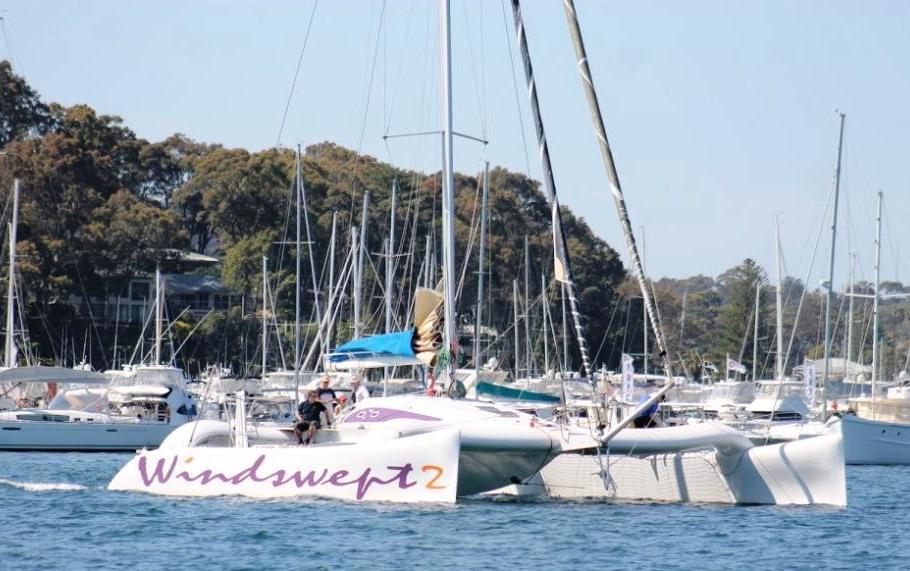
What about new products that have been developed – did you use those?
You take whatever products are available and use them. There has been a shift in the fabrication techniques, but there hasn’t been many changes in materials.
Back in the day you used to make a mould, get a guy with his gut hanging out and a cigarette in his mouth and he’d spray the mould full of fibreglass and that was the boat. Today that’s still the case for some production boats but now there are a lot of boats made with resin infusion which is much cleaner. You still get a mould but you lay the fibreglass or the carbon fibre dry, whatever it is you’re using, put a bag over it and then use a vacuum to pull the resin through it.
Are they faster on the water?
Clearly – if you look at the America’s Cup boats, they’re amazing.
What are you working on now?
The business changed, we don’t do sailboats anymore and stopped doing this 10 years ago because the world changed and if someone wants a sailboat now there are heaps of production options in catamarans. If they want something really high tech then it’s really specialised and hard to make a living out of.
We moved into commercial boats and started designing small passenger ferries. We designed a couple of passenger ferries and were pretty successful in tourism in Tasmania and now, for many of the tourism operations in Tasmania, if it’s got a boat, it’s one of ours.
So we did well there and did some in Brisbane and then some in Cairns and gradually spread our wings offshore. Today the bulk of the passenger ferries in the States that are catamarans are designed by my office – Incat Crowther.
If you go to New York or San Francisco you’ll see our boats – in Mexico, South Africa, Asia, we’re now all over the world in passenger ferries.
What’s the difference between designing a racing Cat and a passenger ferry?
The passenger ferries are generally less complex to design. Usually they’re built out of aluminium, which is a pretty simple material to engineer, it has its quirks but works well. The design, being commercial boats, is a matter of getting in, getting the job done, and getting out.
Our average passenger ferries are built in six to nine months from start, construction to delivered and in service, whereas a private boat project tends to hang around for two to three years.
Someone can ring up and ask some detail about a private yacht project you designed three years ago – they’re still working on it - and the support can be epic in that regard.
With commercial boats it’s a lot more regulated and with the huge volume of boats we do we’ve really refined our expertise and can make boats that consistently deliver.
So you’re enjoying this now?
It’s an interesting job. With the passenger ferries we’ve now moved on very solidly to oil and gas, which is far more complex. One of our recent projects is a 60 metre (200 foot) vessel which will 150 people and is 300 tons of gear to an offshore platform at up to 40 knots. When it gets out there it Dynamically Position or ‘DP’ which is it will actually park itself and sit there as the boat cannot tie up to the platform due to safety risks. So this will sit there and stay where it’s supposed to stay more or less irrespective of what the sea is, or what the current is, or what the wind is, using thrusters.
The average guy who pulls up to fill up his car may not have any idea of what’s involved in getting that litre of fuel out of the ground or sea and into the car. It is amazing how this is done and what’s involved.
We’ve become very well known for this now and are considered by some the ‘go to’ guys for this kind of boat and work.
What have been the challenges in going from getting a degree in Chemical Engineering to doing what you’re doing now?
No one really gives you an education on how to run a business or how to best deal with different cultures and ways of doing business around the world. The hardest or most challenging thing in what I do is dealing with human nature. In business human nature is sometimes not good, it’s competitive and today’s jungle. So to go from a little office with three people to three offices in three countries with more than 50 staff delivering very high value projects and finding our way through those challenges has been by far the hardest thing to do. Its ongoing. The engineering is still complex and challenging but is perhaps secondary to the business challenges.
Ok – Dream Boat; if you had unlimited budget and time, and were building something just for you, what would you build?
Someone else’s boat.
Seriously?
Yeah. Actually, if I was going to build my dream boat we’d be talking about a 7 metre aluminium runabout on a trailer, with a little diesel engine and a fishing rod and a wakeboard – something like that – that’s it, something real simple, low maintenance, don’t have to worry about it, and when it breaks, it’s cheap to fix.
Let’s get back on the water – what was your most memorable voyage when you were sailing?
My most memorable, for all the wrong reasons, was on the boat I mentioned, ‘Raw Nerve’. I remember it ran aground, got modified and had some structural changes, was put back in the water, had a big wing-mast on it and Martin Riley set about wanting to break records and win races on it and went in all the races he could.
We did the Brisbane to Gladstone race one year and did pretty well in that and then went into the Gladstone to Yeppoon Race. This was the first time we’d had a really short sea and there wasn’t enough buoyancy in the bow of the thing.
I remember being on the helm in a following sea in about 20 knots of wind with the spinnaker up and catching a wave and trying to slow the boat down. You would round the boat up and it would heat up and I’d bear away and the boat would tend to want to bury...
Anyway, I buried it.
I remember being pinned to the wheel and looking 50 feet straight down at the water, pretty much about go over forward, and thinking, ‘I’m dead, we’re all dead.’
(Laughs, laughs again!)
‘This is not good…this is not good all…’ (laughs again).
Anyway, the boat popped back up, and popped back up the right way, we sorted it all out and off we went again. We actually nose-dived it three or four times in that one day.
We got to the yacht club in Yeppoon, and there was more racing to be done, I had a rum on the way to the airport and flew home. That was the ultimate step off. (laughs).
I would have too. Your dad – what was it like growing up around someone who was so into boats and sailing and being outdoors – what are your favourite memories?
I was very close to him as a child and fortunately, as a young adult too. I think the most amazing thing was his ‘can do’. He was always ‘yep, we can do that’.
Whatever he decided and put his mind to that he wanted to do, he did. We didn’t have sit-downs where he’d say ‘look Brett, you can do whatever you want’ or ‘you’ve got the ability’ none of that sort of stuff, he just led by example. So back in the 1970’s he’d go off and do the Azores Race or the Round Britain – and I remember he did that and got wiped out by a tanker and rescued – he had all these adventures in his life and none of it was overstated, he just got on with whatever he wanted to do.
I hope to instil that attitude into my own children and am confident I have that myself; if you want to do something, just go and do it, get on with it, find a way to do it.
What were your favourite sailing places to go with him?
We used to be the baggage for the Brisbane to Gladstone every year, so he’d do the yacht race and then there would be a boat stuck in Gladstone which would need delivering back – we always wanted to go north and the boat had to go south, so we’d go out to the Bunker group at say, Lady Musgrave and do a bit of snorkelling and a bit of fishing and hang around, and I always thought that was terrific.
As I got older and became a windsurfer I’d take my windsurfer out there on the foredeck and then go windsurfing as it’s pretty windy, you get the Trades up there. (Trade Winds).
It was beautiful – windsurfing as a teenager in these little lagoons with no one about, 60 miles offshore – fantastic and pretty memorable.
You must have been into the windsurfing pretty soon after this came out?
Yes, well that’s another thing I got from my father. He was obviously a mad keen sailor and when the windsurfer first came out he got one, one of the early ones, struggled with it on Narrabeen Lake as you do, and I was about 12. I learnt to sail it too and never looked back.
How do you get on the water now?
Kite surfing, all the time – a Long Reef, Palmy and Collaroy. I go up to Hawkes Nest to do it too.
What’s the difference between this and windsurfing?
It’s better in Sydney because you need less wind, it’s far more manoeuvrable and you don’t need a crew. You just turn up with your gear in the back of your car and off you go. You can go out for a couple of hours and still come home and hang out with the kids whereas if you go sailing it’s a day, and then a clean up, and maintenance.
What are your favourite places in Pittwater and why?
Right now it’s The Basin because we have two young boys and we chuck them on the boat and we go over there and they go camping with a bunch of friends, which they love, and we just hang out. It’s easy to get to, easy to come home from and it’s beautiful.
What about when you’d come here with your dad?
We used to go sailing, he had a family boat, a couple of them. The later boat was one called ‘Deguello’, which was a 46 foot Catamaran and again I used to put my windsurfer on the boat with a friend and we’d go out to sea in a screaming westerly.
We’d rig up on the foredeck, chuck our windsurfers in and we’d go windsurfing out to sea while dad would go sailing with his mates. We’d do a couple of hours of that and then he’d come and find us and put it all back together.
I remember one day we were out there, dad had basically disappeared, he went north, and we could see this little sail miles back from us and the wind dropped off. We were sitting there and some little sailing boat had seen us from further south sitting on our boards floating two or three miles out to sea. This old guy comes up on his little sailing boat, out on the bow, says, ‘it’s alright boys, I’ve come to rescue you.’
We said, ‘no thanks mate, we’re ok.’
(Laughs out loud)
Didn’t you worry about whales or sharks?
No. (laughs)
The old guy wasn’t happy with these two cheeky young blokes. Anyway, dad came back and picked us up and we had a bit of a chuckle over that one.
He obviously gave you a lot of confidence to be out in the sea too, growing up immersed in that kind of experience?
Yes, he did. I grew up sailing, and the sea can be frightening but sailing the big boats with him, and I sailed in some pretty rough conditions, not survival conditions fortunately , but some pretty rough ones, and the guy was unflappable, always confident, always calm and sure of himself and his abilities, didn’t get panicky, none of that sort of stuff. That’s how good sailors are.
Three generations of Crowther boats. Lock's 'Deguello', 'Te Arawa' and 'Gipsy Rover' - picture courtesy Jim Geddes
It seems giving someone in confidence in their abilities there can be extended into all parts of life to me.
Without a doubt.
What do you think of the Lock Crowther Regatta held each year through RMYC’s Multihull Division?
I think it’s fantastic. I hadn’t seen a lot of these people for a while and it was wonderful to see their enthusiasm for multihull sailing and to see a legacy like that exists. A lot of Lock’s old friends are still involved and I’m really pleased to see that the people who thought of it and organised the first ones are still involved and continue to organise this each year.
What is your ‘motto for life’ or a favourite phrase you try to live by?
You get what you get and you don’t get upset.
Incat Crowther
Incat Crowther is a diversified naval architecture business with offices in Sydney, Australia, Lafayette, USA, Southampton, UK and Rio de Janeiro, Brazil. The company is management owned, with a staff comprising primarily of professional naval architects and engineers, many with shop floor experience.
As a long standing leader in the field of marine design, Incat Crowther has a team of energetic, practical and forward thinking staff, who approach each project with professionalism, integrity and a ‘can do’ attitude.We value win-win contracts, and endeavour to form partnerships and relationships where all parties benefit.
Find out more at: www.incatcrowther.com
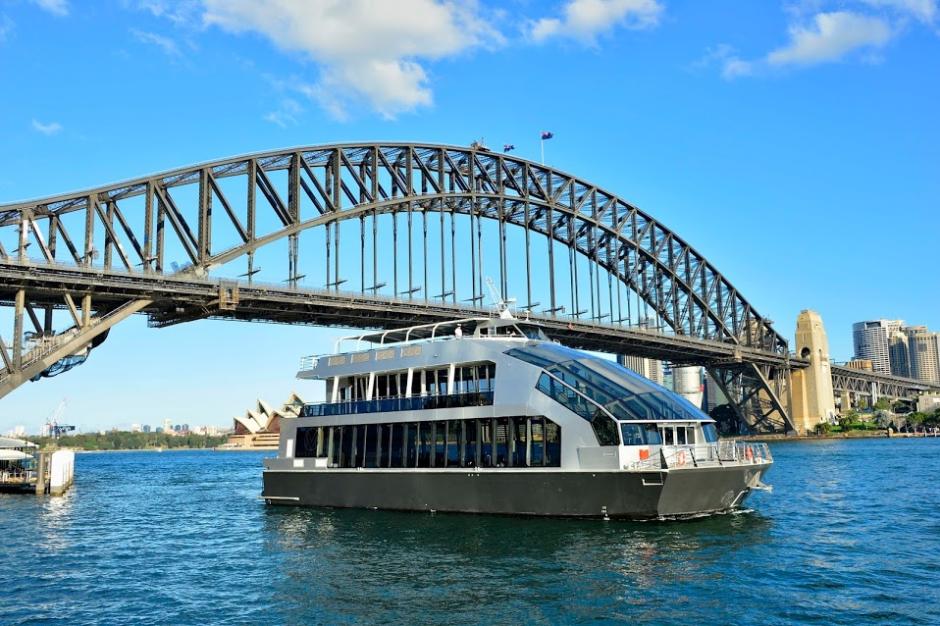
MV Epicure - experience luxury, Sydney Harbour
CAPACITY: Sit Down 80 Banquet – 290 Cocktail – 430 Cabaret – 240
MV Epicure; From their website With a stylish, monochromatic exterior, MV EPICURE I is the new Sydney destination for sophisticated events. MV EPICURE I floats across the Sydney Harbour providing your guests with amazing views of the city skyline through the never-ending, floor-to-ceiling windows.
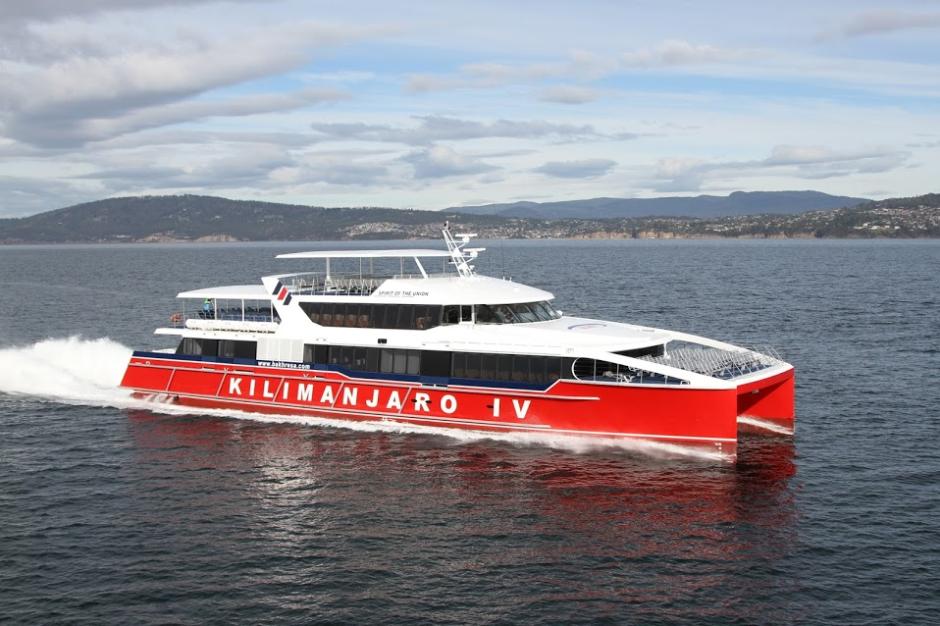
Kilimanjaro IV: Total Capacity: 620 Seats - Capacity Breakdown: VIP: 84 Seats Business Class: 86 Seats Economy Class: 466 Seats Speed: 35 Knots
Owned and operated by Azam Marine Co.: from their website; 'As international tourists discover the magnificent destination of Tanzania, Azam Marine and Coastal Fast Ferries are moving with the times to provide them with swift and comfortable ferry services.'
Official start of the Fremantle-to-Lombok Yacht Race
Sunday, 4 May 1997
Premier Richard Court today officially started the 1,460 nautical mile Fremantle-to-Lombok Yacht Race - describing it as another chapter in Western Australia's proud ocean racing history.
Mr Court said the race - which had 13 entrants - was a fitting event as part of the celebrations to mark the centenary of the opening of the Fremantle Inner Harbour.
"The harbour has been a focal point for momentous events in our maritime history - from the defence of the America's Cup, to the beginnings and endings of great maritime journeys such as those undertaken by David Dicks and Jon Sanders," he said.
"The Fremantle-to-Lombok Ocean Race must rank as one of the world's great yacht races; it provides a tough and challenging test of seamanship, with an exciting destination for competitors."
The race is the second to Lombok. The first was in 1993.
Mr Court said that as well as providing a challenge for blue water sailors, events such as the Fremantle-to-Lombok race could help improve relationships with other countries
"There has been strong co-operation between race authorities in Fremantle and Indonesia and I am told there is intense interest in the event in Lombok itself," he said.
The Premier said the race was an appropriate part of the Port Open Day, which was being held 100 years to the day after the opening of the Fremantle Harbour.
"The centenary is a significant milestone which gives us the opportunity to look back at the fascinating history of the Fremantle waterfront, and to consider what the development of this busy port has meant in terms of the State's economic and social prosperity," he said.
Mr Court said the port was a monument to the brilliant engineer, C Y O'Connor.
"The centenary is an occasion to acknowledge his outstanding efforts, and also the contributions of the many people who over the years have been associated with the port's development," he said.
Retrieved from: https://www.mediastatements.wa.gov.au/Pages/Court/1997/05/Official-start-of-the-Fremantle-to-Lombok-Yacht-Race.aspx
Copyright Brett Crowther, 2015.